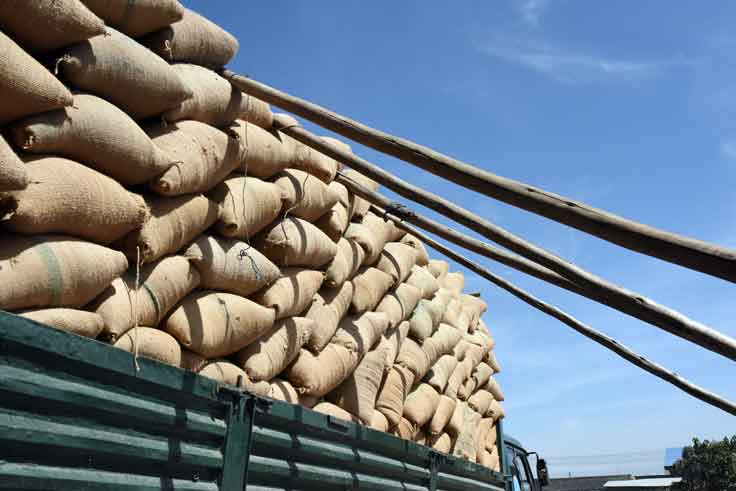New Coffee Release: Ethiopia Kochere Banco Gotete

The coffee was grown by smallholder farmers living around the town of Banco Gotete in Gedeo County, Yirgacheffe region, Ethiopia. Most contributing farmers own less than a hectare of land, and they grow coffee simply as a backyard cash crop. Coffee will usually be interspersed with other subsistence crops, such as sweet potato, mangos and avocados.
General Info:
Farm: Various small farms
Varietal: Heritage Gedeo, 740110 & 74112
Processing: Natural
Altitude: 2,000 to 2,100 metres above sea level
Owner: Legu Trading PLC
Town / City: Banco Gotete, Gedeo County
Region: Kochere Yirgacheffe
Income from coffee is important but minimal for most farmers due to the small size of their farms. As such, inputs are minimal – most coffee grown in the region is 100% organic, though not certified, as farmers simply don’t have the money to apply chemical fertilisers, pesticides or herbicides.
Coffee is selectively hand-picked before being delivered to collection points, usually within 10 km of the producers’ homes. Great care is taken upon delivery to separate out any overripe, underripe or damaged beans before consolidating with other lots for the road to the wet mill.
About the Yirgacheffe region Ethopia
Yirgacheffe is actually part of the Sidamo region in southern Ethiopia, but its exquisite washed coffees are so well-known that is has been sub-divided into its own micro-region. This steep, green area is both fertile and high – much of the coffee grows at 2,000m and above.

At first glance Yirgacheffe’s hills look thickly forested – but in fact it is a heavily populated region and the hills are dotted with many dwellings and villages’ growing what is known as ‘garden coffee’. There are approximately 26 cooperatives in the region, representing some 43,794 farmers and around 62,004 hectares of garden coffee. The production is predominantly washed, although a smaller amount of sundried coffees also come out of Yirgacheffe.
Around 85 percent of Ethiopians still live rurally and make a living from agriculture; each family usually lives in a modest home (often a single round mud hut) and farms their own plot of land, where they grow both cash crops and food for their own consumption.
In Yirgacheffe, coffee is one of the main cash crops – covering from half a hectare to 1.5 hectares (the latter is considered big). This is usually planted alongside a second cash crop – often a large-leafed tree used in making roofs for (and also shade provider for the coffee) known as ‘false banana’. This looks like a banana tree but isn’t – instead its thick stem is used to produce both a nutritious flour and a fermented paste that are staple ingredients.
There is only one main harvest a year in Ethiopia – this usually takes place in November and December across all of the country’s growing regions. There are, on average, 4 passes made during the harvest period, and, in regions that produce both washed and naturals, the last pass is used for the natural coffee. Washed coffees are then generally pulped on the same day that they are picked, sorted into three grades by weight, fermented, washed and then usually graded again in the washing channels. The beans are then dried on African beds, where they are hand-sorted, usually by women.
Conclusion
In the cup expect blueberry, passion fruit and red berry flavours with a thick, sticky body. This versatile coffee is suitable for any brewing method. Enjoy a cup at Origin in De Waterkant and Bree or grab a bag of beans for your home or office. View our full coffee offering here.